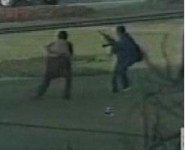Lahore and conspiracy theories

Second Take
Kalpana Sharma
The attack on the Sri Lankan cricket team in
In the initial hours after the attack, all news channels reported the developments, and gave live feeds from Pakistani channels with their own voice-overs. Some channels got better footage than others. But by the evening, the editorializing and blame game, reminiscent of the post November 26 Mumbai attack, began in earnest.
Who was behind the attack? Everyone asked and anchors demanded to know. After November 26, when the media and innumerable experts speculated and came forth with their own theories even as the fires at the Taj and the Trident were dying down, the Indian government had maintained that only investigation would prove who was responsible. Until the interrogation of Mohammad Kasab, the only terrorist caught alive, the government did not officially acknowledge the link between
After the
On Times Now, Mahroof Raza, their resident security expert, suggested to the Pakistan Home Minister that the entire episode was staged so as to detract from the investigations into November 26. This, even as the Indian government officially held that the attack was likely to be the work of "loose" elements in the Pakistan Taliban who were seeking to retaliate for the Drone attacks on Waziristan.
The next morning¿s newspapers also revealed the biases of media houses. For instance, the Free Press Journal, now a shadow of its former self, made no pretence at straight reporting. Under the headline, " ¿Victim¿ Pak stages 26/11¿ ", its entire front page was straddled with stories pushing the theory that the March 3 episode was manufactured by the Pakistani security agencies. Why did the rocket fired by the gunmen not hit the bus in which the Sri Lankan players were travelling, they asked? Why did the grenade also miss it? Were there really five bodies of policemen killed in the encounter under the shrouds as shown by the Pakistani news channels? Who got the TV footage and how was it so made so readily available to all channels? And how did the 12 gunmen get away and melt into the crowds in
These inventive questions could have been asked, but should they have substituted straight news coverage? Why does the Indian media choose to forget the basics of reporting and journalism when it come to
On Times Now, the irrepressible Arnab Goswami, who attacked people like Arundhati Roy and others for questioning the Batla House encounter last year, used this occasion to firmly state that he hoped those civil society groups that had promoted people-to-people exchanges and dialogues between India and Pakistan would realise that after the Lahore incident, Pakistan had become a "no-go zone". Such belligerence from the Indian media, and particularly the electronic media, has now become virtually a norm each time there in any incident involving
It is at times like this that the Indian media is put to the test. What is on test is its professionalism, whether it can report ¿facts¿ without giving them a spin or colour, whether it can control editorial comment mixed with news, and whether it can hold back on setting the agenda. On all these counts the media as a whole, barring a few exceptions, tends to fail.
November 26 was not just a prolonged attack but its aftermath has stretched over many months and continues to dominate relations with